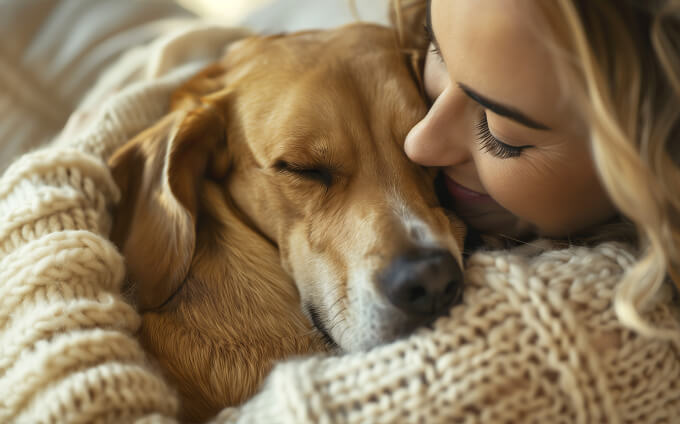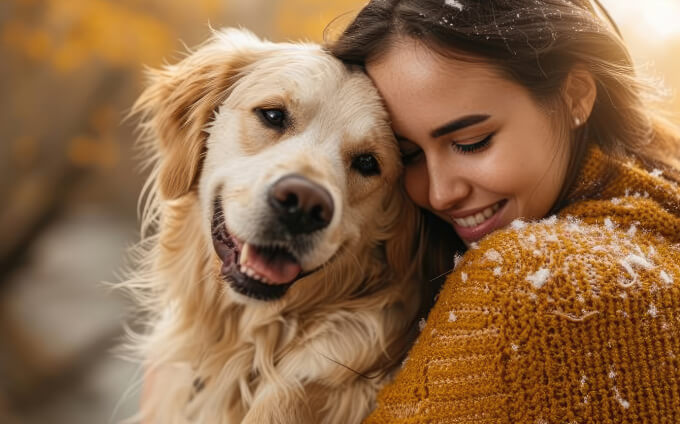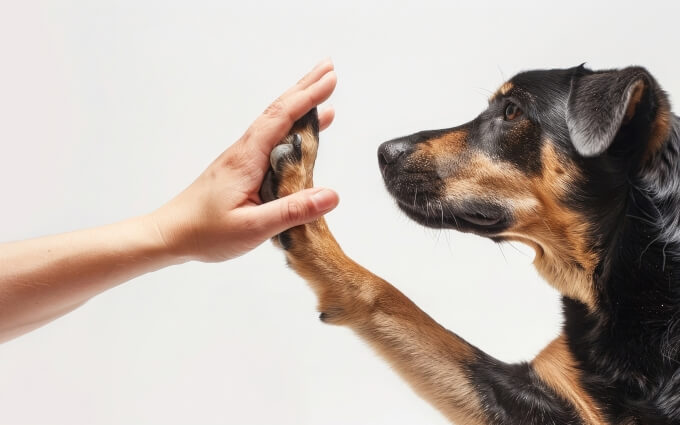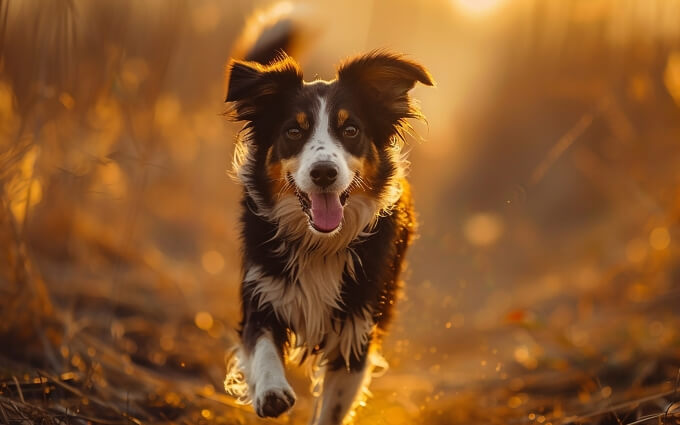- Home
- Tips & Tricks
- How to Train Your Dog to Walk Off-Leash
How to Train Your Dog to Walk Off-Leash
This guide will walk you through everything you need to know, from essential commands to mastering off-leash walks even in distracting environments

- 51
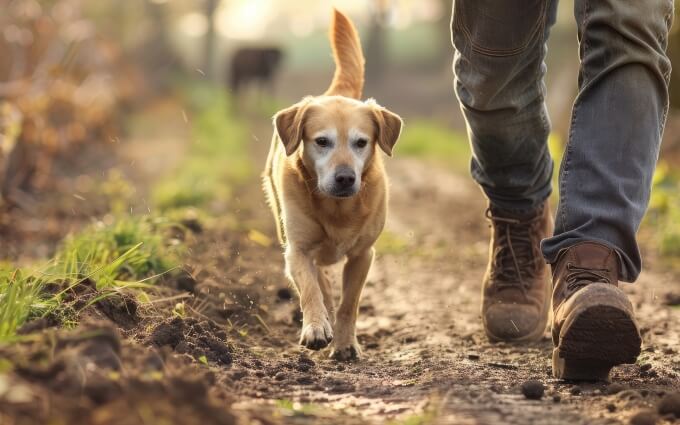
Why Off-Leash Training?
Letting your dog roam freely during walks is a dream for many dog owners. It allows your pup to explore and exercise without restrictions, all while reinforcing your leadership and their trust in you. Off-leash training not only provides your dog with the physical and mental stimulation they crave but also strengthens the bond between you two.
But freedom comes with responsibility. Your dog must be well-trained and reliable in their response to commands before they can enjoy off-leash adventures. The process is not only about removing the leash; it's about ensuring that your dog remains attentive and responsive, even when distractions are all around.
Step 1: Nail Down the Basics
Before you even think about letting your dog off-leash, it's crucial to master basic commands like sit, stay, and recall (the ‘come' command). These commands are the foundation of off-leash training. If your dog can't reliably obey these commands on a leash, they won't do so without one.
Recall Training
- Start in a distraction-free environment, like your backyard, using a long leash.
- Call your dog's name followed by the ‘come' command, and reward them generously when they respond.
- Gradually increase the distance between you and your dog as they improve.
Loose Leash Walking
Make sure your dog walks beside you calmly without pulling. This teaches them to stay close to you, a skill that is vital when the leash comes off.
Step 2: Practice Off-Leash Behavior in Controlled Settings
Once your dog has mastered the basics, it's time to practice off-leash behavior in a controlled environment. Start in a secure, enclosed space like a fenced yard or a quiet, fenced dog park. This allows your dog to experience freedom while still being in a safe, confined area.
Using a Long Lead
- Attach a 30-foot leash to give your dog the feeling of being off-leash while still retaining control.
- Practice commands like ‘come', ‘stay', and ‘heel'. This reinforces their training in a more open space.
Gradually Introduce Distractions
Slowly introduce distractions like toys, other dogs, or strangers. Your dog should learn to obey your commands despite these new elements.
Step 3: Transition to Off-Leash in Low-Risk Areas
Now that your dog responds well in controlled settings, it's time to test their off-leash abilities in low-risk areas, such as quiet hiking trails or secluded beaches. The key here is to keep the environment familiar and predictable.
Start Small
- Begin with short off-leash sessions, gradually increasing the duration as your dog becomes more comfortable.
- Keep an eye on your dog's body language to ensure they aren't becoming overly excited or stressed.
Be Prepared for Setbacks
Every dog will experience setbacks. If your dog gets distracted and doesn't respond to a command, don't punish them. Instead, calmly regain control and return to the basics.
Step 4: Off-Leash Training in Public Areas
When your dog is reliably responding to commands in low-risk settings, it's time to venture into more public areas. Remember, not all places allow off-leash dogs, so be sure to check local regulations before heading out.
High-Distraction Training
- Choose areas with moderate distractions, like parks with other dogs or busy streets.
- Use high-value rewards to reinforce good behavior and recall.
Emergency Commands
Ensure your dog understands emergency commands, like ‘leave it' or an emergency recall, which they must obey immediately, no matter what. These commands can be life-saving in unpredictable situations.
Step 5: Off-Leash Adventures and Safety Tips
Congratulations! Your dog is now ready for true off-leash adventures. However, safety should always be your top priority.
Keep Identification on Your Dog
Before you head out, make sure your dog has proper identification, including a collar with tags and a microchip. This is crucial in case they get lost.
Know When to Leash Up
- Always leash your dog when approaching unfamiliar dogs, wildlife, or if there are risks like traffic nearby.
- Stay vigilant and trust your instincts; if a situation feels unsafe, put the leash back on.
Enjoy the freedom and joy that off-leash walking brings, but never compromise on safety. With consistent training and patience, you and your dog can experience the best of both worlds - freedom for them and peace of mind for you.
Frequently Asked Questions about off-leash dog training
How do I train my dog to walk off leash?
Start in a safe, enclosed area and practice recall with rewards before gradually transitioning to open spaces.
Is it safe to let my dog walk off leash?
It can be safe if your dog has reliable recall and you're in a secure environment where off-leash walking is allowed.
How long does it take to train a dog to walk off leash?
Training time varies by dog, but with consistent practice, many dogs learn within a few weeks to months.
What breeds are best for off-leash training?
Breeds with strong loyalty and focus, like retrievers and shepherds, often excel, but any dog can learn with patience.
What should I do if my dog runs off during off-leash training?
Stay calm, avoid chasing, and use a strong recall command paired with rewards to encourage your dog to return.
- 51
 Marcin Solgaard
Marcin Solgaard
Marcin is a true dog enthusiast! He is always seen with his 9-year-old boxer by his side. Marcin believes that dogs thrive on love, fun and positive experiences. On their daily adventures, people often stop Marcin to ask how his boxer is so happy and well-behaved. He happily shares tips on dog behavior and fun activities to create a happy and harmonious life with your dog.
-
Dog Behavior
 Does My Dog Know I Care About It?
Does My Dog Know I Care About It?Discover the ways your dog shows it knows you care and how you can reinforce that loving bond through simple actions and daily interactions.
 Cassandra DalgaardAug 05, 202444
Cassandra DalgaardAug 05, 202444 -
Food & Nutrition
 The Best Foods to Boost Your Dog's Immune System
The Best Foods to Boost Your Dog's Immune SystemTo keep your dog healthy and resilient, fueling their immune system with the right foods is key. In this post, we'll cover the top nutrient-packed foods that can give your dog's immune system the support it needs, helping them fend off illness and stay energetic.
 Marcin SolgaardOct 04, 20249
Marcin SolgaardOct 04, 20249 -
Dog health
 Which Emotions Do Dogs Actually Experience? Understanding Your Dog's Emotions
Which Emotions Do Dogs Actually Experience? Understanding Your Dog's EmotionsDogs experience a variety of basic emotions similar to those of a young child. Learn about the emotions your dog truly feels, how they express them, and what it means for your relationship.
 Cassandra DalgaardJul 30, 202478
Cassandra DalgaardJul 30, 202478 -
Tips & Tricks
 How to Train Your Dog to Give Paw
How to Train Your Dog to Give PawTeaching your dog to give paw is a fun and rewarding experience that strengthens your bond. This guide walks you through the process with tips, tricks, and plenty of paw-sitive reinforcement.
 Marcin SolgaardApr 11, 202441
Marcin SolgaardApr 11, 202441 -
Puppies & Young dogs
 How to Puppy-Proof Your Home: A Complete Guide
How to Puppy-Proof Your Home: A Complete GuideBringing a new puppy home is thrilling, but keeping them safe means some serious puppy-proofing. This guide covers everything from securing hazardous items to creating a puppy-friendly zone, making your home a safe haven for your curious new companion.
 Michelle TorringOct 10, 202412
Michelle TorringOct 10, 202412 -
Tips & Tricks
 How to Teach Your Dog to Come When Called
How to Teach Your Dog to Come When CalledThis guide walks you through the process, from selecting the right command to dealing with distractions, ensuring a strong recall every time.
 Marcin SolgaardJul 10, 202448
Marcin SolgaardJul 10, 202448 -
Food & Nutrition
 How to Choose the Right Diet for Your Allergic Dog
How to Choose the Right Diet for Your Allergic DogFind out how to select the perfect diet for your dog with allergies. Learn about elimination diets, hypoallergenic foods, and the best ingredients to keep your furry friend healthy and happy.
 Marcin SolgaardJun 09, 202427
Marcin SolgaardJun 09, 202427 -
Tips & Tricks
 How to Keep Your Dog Off the Furniture
How to Keep Your Dog Off the FurnitureEnsuring your dog stays off the furniture can be a challenge, but with the right techniques and consistency, you can create a pet-friendly environment that respects your space.
 Marcin SolgaardJun 24, 202439
Marcin SolgaardJun 24, 202439 -
Dog Behavior
 Why Your Dog Ignores You and How to Change It
Why Your Dog Ignores You and How to Change ItIs your dog ignoring you? Explore the reasons behind this behavior and actionable steps to bring back the focus, from training techniques to environmental adjustments.
 Marcin SolgaardJul 16, 202439
Marcin SolgaardJul 16, 202439 -
Dog health
 Essential Tips for Caring for Your Dog's Teeth and Gums
Essential Tips for Caring for Your Dog's Teeth and GumsMaintaining your dog's dental health is crucial for their overall well-being. This guide covers various methods to care for your dog's teeth and gums, ensuring they stay healthy and happy.
 Cassandra DalgaardAug 19, 202436
Cassandra DalgaardAug 19, 202436

